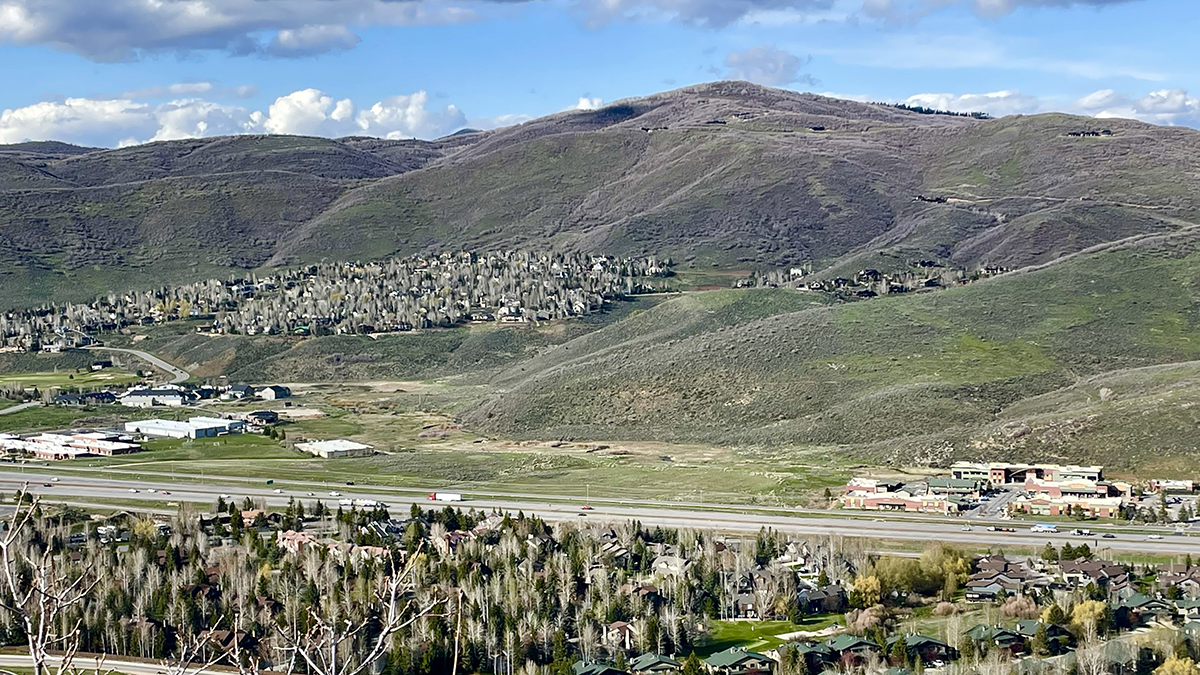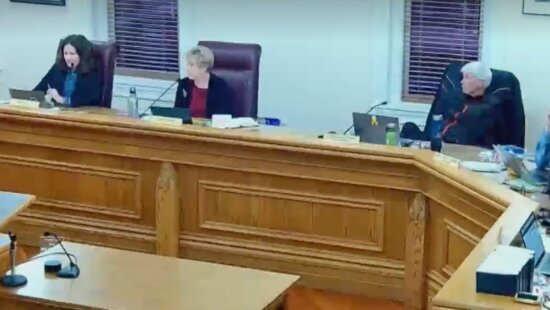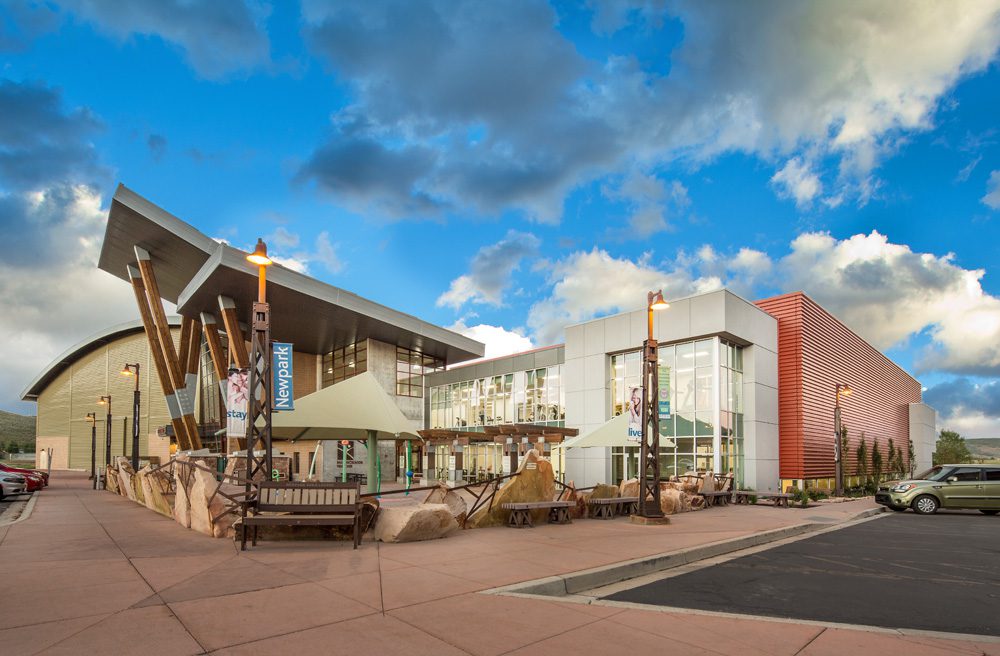Town & County
Developer cites income gap in pitch to shift Cline Dahle housing mix

The Cline Dahle parcel located on the east side of I-80 just south of Jeremy Ranch Elementary school pictured on May 16, 2025. Photo: Marina Knight//TownLift
The County is weighing deed restrictions, market-rate units as planning advances
SUMMIT COUNTY, Utah – Summit County’s chosen developer for the Cline Dahle parcel is asking county councilmembers to reconsider the income targets and housing mix for the 30-acre Jeremy Ranch project, arguing that the needs of the county’s workforce differ sharply from the assumptions built into the original county request for proposals.
Tony Tyler of Columbus Pacific Development — selected last summer to build housing, a new fire station and a recreation fieldhouse on the site next to Jeremy Ranch Elementary School — presented what he acknowledged was a “controversial” pitch during a Nov. 19 council meeting: adding more for-sale homes, recalibrating affordability levels and potentially converting the highest-priced deed-restricted homes into market-rate units.
Workforce earns far below county median
Tyler told the council that Summit County’s workforce earns substantially less than the median income of existing resident households, a gap he says should influence how the 172-unit project is structured. Summit County hosts 34,447 jobs, yet none of the top 20 job categories — representing 41% of all local jobs — reach the county’s 100% area median income (AMI) for a single person. Those workers earn a median of roughly $44,000 per year, or about 38% AMI, according to Tyler’s data. Across all jobs, the average worker earns the equivalent of 48% AMI.
“The RFP was originally designed to respond to existing Summit County residents, not necessarily the workforce,” he said. “And there is a real difference between the two.”
Of the county’s roughly 16,900 households, Tyler said only 11,000 residents work locally, while nearly 20,000 people commute in daily from four surrounding counties. Based on typical household assumptions, he estimated most workforce households fall between 68% and 88% AMI — income levels that support some for-sale homes, but not the rental-heavy mix currently envisioned.
“Workforce families are not going to live in an 80% AMI one-bedroom apartment,” he said.
Proposal: Shift toward for-sale units
Tyler proposed flipping the current balance of rentals and for-sale homes by introducing more two- and three-bedroom townhomes restricted at 80% AMI and priced around $400,000. He said internal modeling shows the project could support a roughly 60/40 split between for-sale and rental units while still maintaining deeply affordable apartments below 60% AMI for single workers and couples.
The developer asked the council to clarify a core policy question: whether the project should primarily serve current resident households, as the RFP intended, or focus on converting commuting workers into full-time county residents.
Most debated change: converting 22 homes to market rate
The most contentious proposal centers on the 22 deed-restricted homes aimed at households earning 120% to 150% AMI — or up to roughly $169,000 annually for a family of four. Tyler told the council those buyers are unlikely to purchase homes with capped resale values. Instead, he suggested converting those units to full market rate, arguing that the resulting revenue could be used to deepen affordability elsewhere in the project by lowering AMIs or increasing the number of restricted homes.
“Someone making $200,000 a year is more likely to buy a market-rate home,” Tyler said. Selling the 22 units at market rate, he added, would not change the developer’s bottom line but could create flexibility to serve lower-income earners.
Columbus Pacific has tested alternative deed-restriction models elsewhere, including renting out the second phase of Slopeside Village in Canyons Village at market rate but requiring tenants to be employed within Summit County.
Zoning, process and next steps
Tyler said the next step is to finalize a formal agreement with the county and prepare a joint development application next month, which will require a rezone. He proposed creating a new “NMU-2” zone, modeled on Summit County’s existing neighborhood mixed-use zone. Councilmember Chris Robinson, who sits on the project’s subcommittee, said establishing a new zone is “crucial” for the project’s viability.
The Summit County Council did not make decisions at the Nov. 19 meeting. Members said they would weigh Tyler’s three key questions after receiving additional site-planning information:
Should the project focus on resident households or the lower-earning workforce?
Should the unit mix shift toward more for-sale homes?
Should the 120%–150% AMI units be allowed to go market rate to strengthen affordability elsewhere?




















